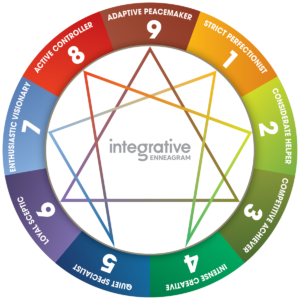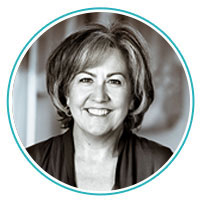Just when you thought you have enough tools to be equipped to thrive, I bring out another one for you to consider!
This particular tool is no ordinary assessment. In fact, this tool has been around in various forms at least as far back as the Ancient Greek civilization. It’s been found in ancient writings in several civilizations as a matter of fact. It’s recent resurgence can be traced from Eastern Europe to South America and then into the United States.
The Enneagram of Personality may be something you are quite familiar with; if you’re on Instagram at all there are many profiles who are sharing information about the nine types. If this is all new to you then please allow me just a few words about the tool and why it is so valuable for your personal and professional growth.
Ennea means nine in Greek. Gram originates from Greek also meaning something drawn. Here is a picture of the Enneagram:
(copyright Integrative9)
This is an image of the IEQ9 assessment model for which I am a certified practitioner. That’s fancy for saying I am qualified to use the model in my coaching and workshops. If you’re familiar with the Typology podcast or the book The Road Back to You, the author Ian Morgan Cron is also a certified IEQ9 practitioner. IEQ9 has been developed with the help of many of the current Enneagram specialists: Helen Palmer and Beatrice Chestnut among them. This particular Enneagram assessment is not free (I don’t make any money from you choosing to take the assessment) however it is an assessment that has been quantified to within 95% accuracy of typing on the first assessment. If you’re already a fan of the Enneagram you may have experienced receiving results for three possible types from a free assessment. That can be confusing as you’re trying to understand the model and yourself.
SO enough with the IEQ9 commercial! Why is the Enneagram a useful tool?
Any personality assessment gives generalized information about you in response to your answers to the questions. They typically measure your behavior in regard to work settings or general relationships. The Enneagram looks at your motives for why you behave or relate the ways you do. No one can type you based on external evidence with the Enneagram. You are the one who knows the why behind your actions. Each of the nine types has a general name, a vice and a virtue attributed to the type, a list of typical blindspots and ways to grow and develop into an integrated, wholehearted individual. The purpose of the Enneagram is to help individuals not only learn themselves more fully but also be equipped to relate more effectively in community: whether that’s work, life or faith communities. Let me make this personal.
Photo by S O C I A L . C U T on Unsplash
I have loved new ideas, big ideas all my life. I have taken the Four Elements assessment; the DiSC; the MBTI (Myers-Briggs Temperament Inventory); StrengthsFinders and Gregorc’s MindStyles. From each of those results, themes of who I am were evident but none gave language to how best to become a mentally, emotionally and physically healthy version of myself. The Enneagram does that. So many elements of how I’ve lived my life to this point make sense through the lens of the Enneagram. It is not specifically a spiritual tool yet for centuries Christians have been using the model to help individuals see themselves honestly and learn to let go of unhelpful patterns to embrace Christ-like qualities.
It is the ONLY tool that has helped me give myself Grace as God has offered it to me. I’m learning to be joyful in my own skin as I continue to learn and grow and change for the better.
Action step: learn more about this tool. If you don’t yet know your Enneagram type consider taking an assessment to find out. I’d love to hear what you’ve learned so far!











 Hi there! I'm Lisa. I am a native California girl married to my best friend, Colin; we currently live and work in the Silicon Valley. I am privileged to be mom to two fantastic grown sons and mom-in-law to a wonderful daughter.
Hi there! I'm Lisa. I am a native California girl married to my best friend, Colin; we currently live and work in the Silicon Valley. I am privileged to be mom to two fantastic grown sons and mom-in-law to a wonderful daughter.